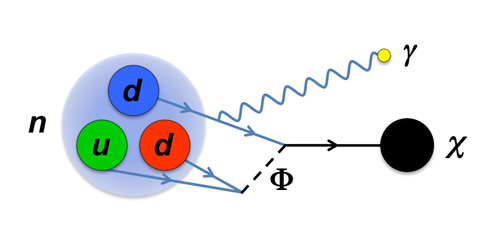Neutron Decay May Hint at Dark Matter
Neutrons decay within about 14.5 min, but their exact lifetime is still debated, as two types of neutron decay experiments give conflicting results. The source for this discrepancy could be some unidentified systematic error. But another possibility is that neutrons decay into invisible particles that constitute the missing dark matter. This new hypothesis has sparked significant interest, with one group of experimenters already putting the idea to the test. The results of that effort constrain one version of the theory, but other scenarios remain viable.
Outside the nucleus, a neutron decays into a proton, an electron, and a neutrino. Studies of this decay process come in two varieties, which go by the names “bottle” and “beam.” In a bottle experiment, researchers place a set of ultracold neutrons in a container and count how many remain after a certain time has passed. In a beam experiment, researchers observe a stream of neutrons and count the number of protons created from decays. The beam neutron lifetime is roughly 9 s longer than the bottle value.
Bartosz Fornal and Benjamín Grinstein from the University of California, San Diego, propose a solution to this discrepancy that assumes neutrons decay 1% of the time into dark matter particles. Because beam experiments would not detect these decays, their inferred neutron lifetime would be longer than the actual value. Fornal and Grinstein investigate several scenarios with neutrons decaying into different combinations of dark matter and visible particles. In one of these scenarios, neutron dark decays are accompanied by a gamma ray. Inspired by this possibility, Christopher Morris from Los Alamos National Laboratory, New Mexico, and colleagues monitored the gamma-ray emission from a bottle of ultracold neutrons. They didn’t find any signal, appearing to rule out this proposed decay channel in the photon energy range of 782 to 1664 keV. But other decay scenarios—that produce lower energy gammas or no gammas at all—are still possible and might be tested by looking for anomalies in nuclear decays.
This research is published in Physical Review Letters and posted on the arXiv.
–Michael Schirber
Michael Schirber is a Corresponding Editor for Physics based in Lyon, France.





